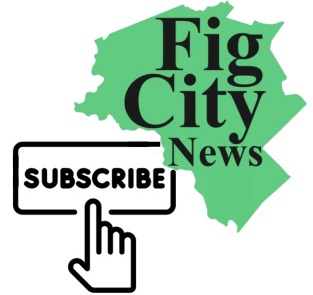Newton’s share of the federal American Rescue Plan Act (ARPA)is $63,000,000. How is Mayor Fuller allocating the money? Along with expenditures for the Newton Police Department’s HVAC improvements for $1,400,000; $2,000,000 in Household Assistance for low-income residents and those negatively affected by the pandemic; $50,000 for a Newton Centre Outdoor Pavilion feasibility study; or $2,500,000 in road repairs; Mayor Fuller has authorized $80,000 for a nine-month Bicycle/Pedestrian Master Plan, which according to the City’s federal budget report is “to help reduce greenhouse gas emissions, increase public health, and support community and economic development. The goal is a transportation system that is safe, smart, accessible, livable and sustainable.”
Under the direction of Nicole Freedman — former Director of Transportation Planning, now Transportation Planning Coordinator — the plan will develop a connected network of safe streets and roads for cyclists and walkers of all ability levels and pinpoint infrastructure upgrades to make the network more accessible for people on bikes and on foot. In addition, the plan will prioritize short- and long-term projects, including “a sequence, timeline and costs for implementation” of the overall plan. Among its first tasks, the City has hired Kittleson & Associates, consultants who have worked on bicycle and pedestrian plans nationwide. In addition, Ms. Freedman, a U.S. bicycle Olympian, who was responsible for developing Bike Boston under former mayor Thomas Menino, will study bicycle and pedestrian models in Boston, Cambridge, Somerville and other successful plans across the country.
Among the groups to be included in the “bicycle/pedestrian network plan working group” are: Bike Newton, Safe Routes to School, the Transportation Advisory Group, the Commission on Disabilities, Newton Public Schools, the Newton Police Department, the Department of Public Works, the Department of Parks, Recreation and Culture. And the planners will solicit input via an online interactive map as well as two public hearings.
Lois Levin, who founded Bike Newton fifteen years ago, has been an ardent advocate for increasing bicycle ridership in Newton by increasing bike safety. When she asked friends the reason they didn’t ride their bikes, they would tell her they were afraid of accidents. She describes Bike Newton as an environmental organization promoting bike safety. In making bike safety a priority, Ms. Levin believes it will be possible to reduce reliance on cars, thereby reducing congestion and pollution.
Alicia Bowman, Ward Six City Councilor-at-Large, agrees. She realized that she ”could get around the city by bike because it’s better for the environment, and with the right infrastructure we could open up biking for more people. It’s more fun and faster, and people are getting fresh air.” A past president of Bike Newton, Councilor Bowman led a budget resolution asking for a bike/pedestrian study to promote bike safety and traffic calming, which garnered full Council support and paved the way for the current ARPA-funded study. “We all agree that we benefit by making Newton more walkable and bikeable.” The Councilor noted the priority projects should “connect people to where they want to go by bike.” She envisions a plan and bike lane infrastructure that would allow bike riders to ride safely from Wellesley to Galen Street in Watertown … and would require a range of safe bike lanes, consistent with local traffic patterns and slower speeds along bike routes. As for walkability, the Councilor stressed the need for sidewalk upgrade and repair, safer intersections, and again, slower traffic. As she says, “the larger issue is paying for the infrastructure: paving, reconstruction, wider sidewalks, and repaired streets.”
Chuck Tanowitz, Secretary of Newton’s Economic Development Commission, is a dedicated cyclist, regularly riding his bike from his West Newton house to his job in Nonantum — and before that to Needham Street and Cambridge. With full praise for Nicole Freedman’s leadership — “everywhere she went, she transformed the city,” he is adamant that the City needs to reframe bike lanes. He offers two examples on Walnut Street, adjacent to and across the street from TRIO. There is a painted, raised bike lane from TRIO’s driveway to Washington Street, and between the curb and parked cars across from TRIO. On the other hand, he condemned Crafts Street bike lanes as unsafe, particularly for the school children traveling to and from Day Middle School and Newton North High School. “We need protected infrastructure,” he said, which would require sacrificing some on-street parking. “Why do we need parking on Walnut Street,” he asks, suggesting that people can park on side streets. “The question we need to ask is what is the priority on any given street? If we want main access streets to be for public use across multiple transportation modes, then is parking the best use of that space? It may be a good use of space on side streets, where we want to slow down drivers, but it may be that on certain parts of Crafts or Walnut we want to use that space differently. Or in other places we can use parking as a buffer. But we can’t be wedded to the idea that people are entitled to parking anywhere that they want. We need flexibility in how we look at it and use it.”
Mr. Tanowitz believes that more people would ride bikes or walk to village centers, or Trader Joe’s and the Star Market, but choose not to. He, too, advocates for a system of connected, “low stress,” protected bike routes that would encourage people to ride for recreation, to do errands, and to get to work. And, like Councilor Bowman, Mr. Tanowitz hopes the bicycle/pedestrian plan will produce route maps showing bikers the way to safely connect to their destination.





